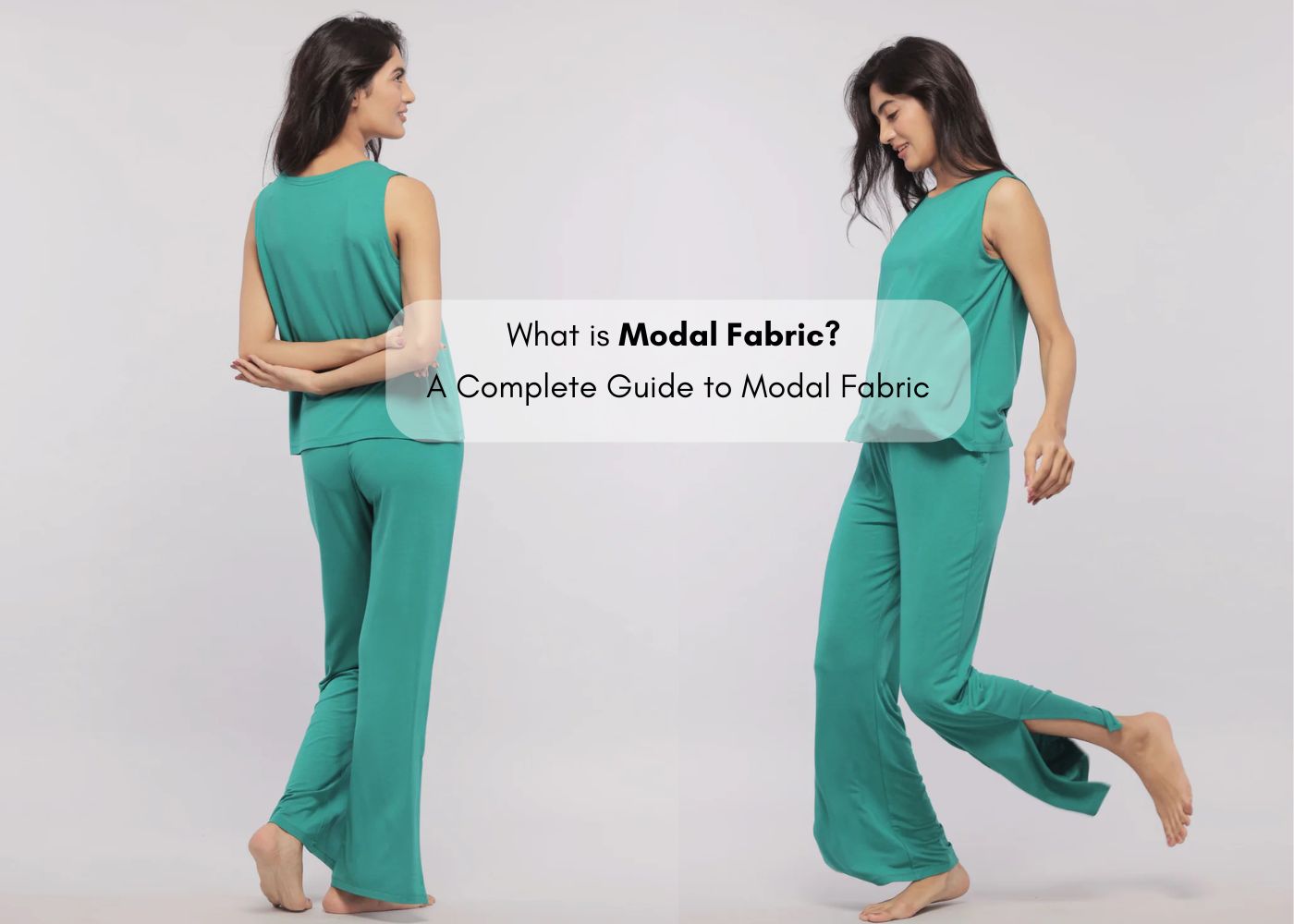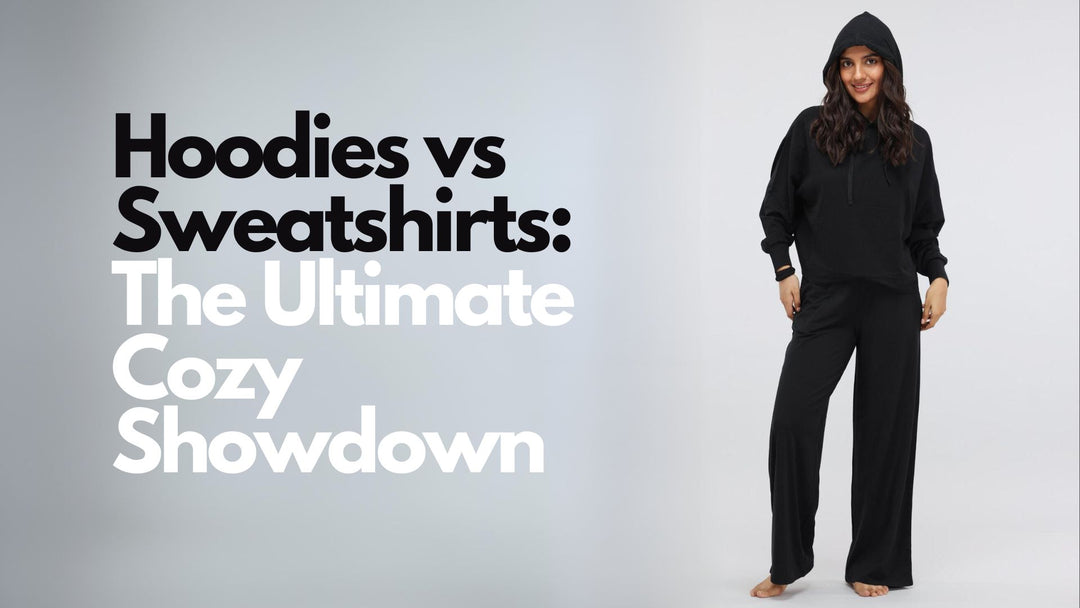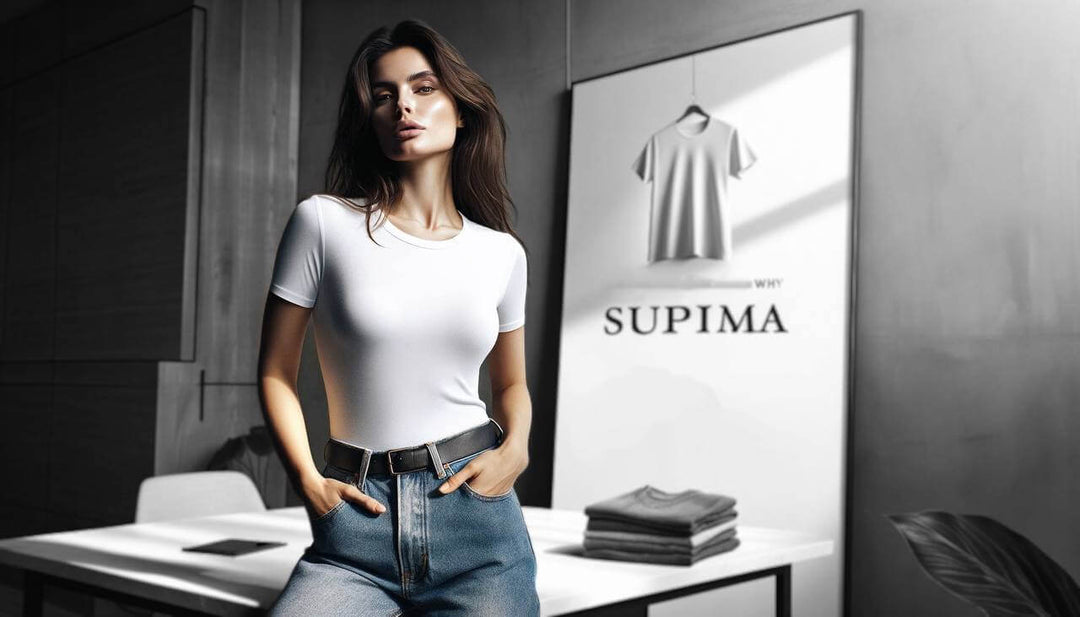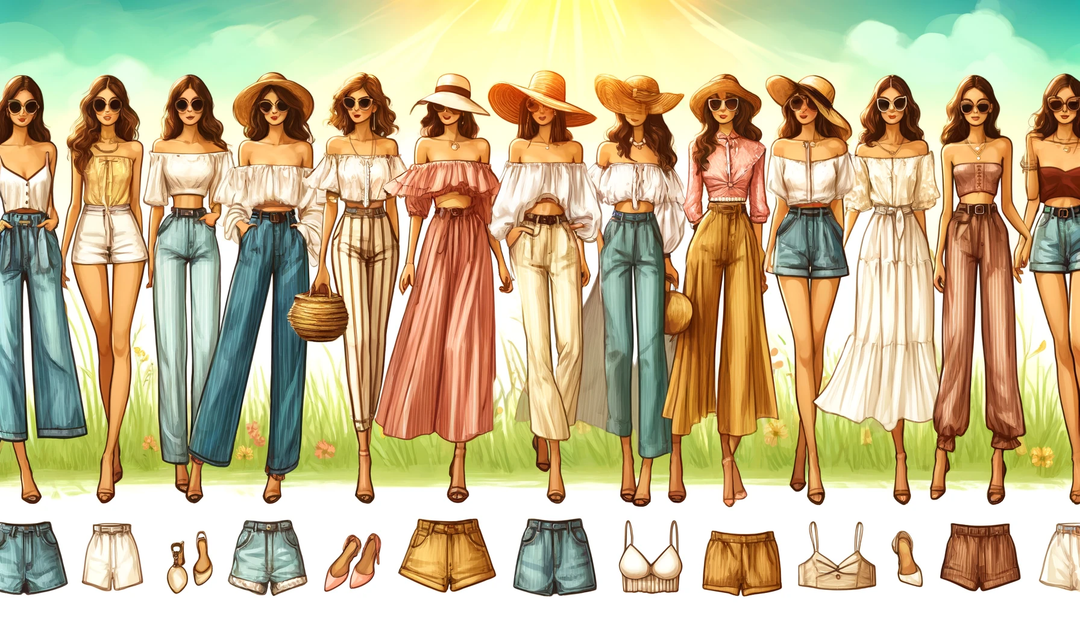What is Modal Fabric?
Modal fabric isn't just any textile—it represents the intersection where fashion seamlessly meets functionality. Crafted from the cellulose of beech trees, this semi-synthetic material undergoes an intricate process to become the "soft whispers" of fabric that it is renowned for. But what exactly makes modal the buzzword in the fashion industry today?
Soft as Silk, Practical as Cotton
Modal manages to strike a rare balance, offering the luxurious feel of silk with the robust practicality of cotton. This unique combination makes it an ideal choice for everything from high-end fashion to everyday casual wear. Its breathability and durability are just icing on the cake, making it as comfortable as it is long-lasting.
An Eco-friendly Choice
For the environmentally conscious, modal clothing is particularly appealing. Its production process is designed to use significantly less water than required for cotton, and it incorporates environmentally friendly practices that minimize waste and chemical use. This makes the modal not just good for your wardrobe but also kind to the planet.
Why Does Modal Fabric Reign Supreme in Clothing?
If comfort could be woven into fabric, modal would be it. Modal material's widespread popularity in the fashion industry isn't incidental; it's meticulously engineered to enhance wearer comfort regardless of the setting—be it a strenuous hike or a lazy day at home.
Breathability
Modal is an exceptionally breathable fabric, making it an excellent choice for activewear and modal underwear. It keeps you feeling cool and dry, even during the most intense physical activities or on particularly warm days, ensuring comfort without compromise.
Crease-resistance
Unlike many fabrics that crumple at the slightest stress, modal garments remain impressively smooth. This quality makes modal a preferred fabric for situations that demand a polished look, be it in high-stakes business environments or at casual social gatherings.
Ease of Care
One of modal's most user-friendly features is its low maintenance. The fabric is designed to resist shrinking and maintain its beauty with minimal care, freeing you from the tyranny of tedious laundry rituals.
The Technical Lowdown: Modal Fabric Specifications
Let's get into the nitty-gritty details that actually matter when you're shopping for modal:
Weight and Structure
-
Lightweight modal: 120-140 GSM (perfect for summer tees and underwear)
-
Medium weight: 150-180 GSM (ideal for year-round wear)
-
Heavy weight: 180-220 GSM (great for loungewear and bedding)
Thread Count and Weave Types
Modal typically comes in three main weaves:
-
Jersey knit (most common) - stretchy, breathable, thread count 150-200
-
Interlock - double-knit, more stable, thread count 200-250
-
Rib knit - textured, extra stretch, thread count 180-220
Stretch and Recovery
-
Pure modal: 4-7% natural stretch
-
Modal with 5% elastane: 15-25% stretch
-
Modal-cotton blends: 8-12% stretch
Fun fact: I once wore a modal shirt for 16 hours straight during a cross-country flight, and it still looked fresher than my travel companion's cotton tee!
Thermal Properties You Should Know
-
TOG rating: 0.5-1.0 (exceptionally breathable)
-
Thermal conductivity: 0.30-0.35 W/mK
-
Moisture regain: 11-13% (vs cotton's 7-8%)
-
pH level: 5.5-6.5 (skin-friendly and hypoallergenic)
What Distinguishes Modal as a Premier Fabric Choice?
Often referred to as "second-generation rayon," modal is distinguished not just by its origins but by its performance and aesthetic qualities. It stands out as a superior choice among textiles, favored by both designers and consumers for several compelling reasons.
Luxurious Texture
The texture of the modal is so fine and silky, it’s akin to wearing a cloud. This smoothness makes it a delight for the skin, offering a comfort that is as much about feel as it is about appearance.
Color Retention
Modal's ability to maintain vibrant colors wash after wash is a major plus for fashion enthusiasts. Whether it's a bold dress or a subtle shirt, modal ensures that your clothes look as lively as the day you bought them.
How Modal is Actually Made: The Journey from Tree to Tee
The production process fascinates me every time. Here's what really happens:
-
Sustainable Harvesting
-
Beech trees are harvested from FSC-certified forests
-
Trees regenerate from their own root system (no replanting needed!)
-
One tree can produce modal for about 100 t-shirts
-
Pulp Creation
-
Wood chips are cleaned and soaked
-
Cellulose is extracted using a closed-loop system
-
95% of chemicals are recovered and reused
-
Fiber Spinning
-
Cellulose solution is pushed through spinnerets
-
Fibers are stretched to increase strength
-
Final fibers are 10-15 microns in diameter (finer than silk!)
-
Fabric Formation
-
Fibers are spun into yarns
-
Yarns are knitted or woven based on end use
-
Fabric is treated for optimal softness
What are the Pros and Cons of Modal Fabric?
|
Aspect |
Pros |
Cons |
Our Verdict! |
|
Softness |
Unmatched Softness:Exceptional softness makes it a favorite for day-long comfort. |
Higher Cost: Can be more expensive than some other textiles. |
The superior comfort and longevity justify the initial investment. |
|
Environmental Impact |
Eco-friendly Production:Uses less water and chemicals than many other fabrics. |
Chemical Processing:Production involves chemical solvents. |
Modern sustainable practices and closed-loop processes minimize environmental impact. |
|
Durability |
Durable Quality:Resistant to shrinking and fading, ensuring long-term use and less frequent replacement. |
Care Requirements:Needs careful washing and drying to maintain quality. |
Simpler to care for than many luxury fabrics, offering ease despite care needs. |
|
Sustainability |
Renewable Source: Made from sustainably harvested beech tree cellulose. |
Energy Use in Production: Energy-intensive compared to some natural fibers. |
Energy use is offset by the fabric's longevity and reduced need for frequent replacements. |
|
Comfort |
Highly Breathable: Keeps the wearer cool and comfortable, ideal for a range of climates and activities. |
Limited Availability: Not as widely available as cotton or polyester, which might limit choice. |
Exclusive availability often means higher quality and better production standards. |
The Complete Modal Care
After ruining my first modal shirt (yes, even experts make mistakes), I've perfected the care routine:
Washing Like a Pro
-
Turn garments inside out – protects the surface fibers
-
Use cool water (30°C/86°F max) – hot water can damage the fibers
-
Choose gentle cycle – modal doesn't need aggressive washing
-
Mild detergent only – skip the fabric softener (modal is already soft!)
-
Wash with similar fabrics – avoid rough items like jeans with zippers
Drying Without Drama
-
Air dry when possible – hang on a wide hanger to prevent stretching
-
If using dryer: Low heat only, remove while slightly damp
-
Never wring modal – gently squeeze excess water instead
Storage Secrets
-
Store in cool, dry place away from direct sunlight
-
Use cedar blocks to prevent moths (they love modal!)
-
Keep colored and white modal separate to prevent color transfer
Ironing Guidelines
-
Temperature: Medium heat (135-150°C/275-300°F)
-
Always iron inside out
-
Use steam for best results
-
For stubborn wrinkles: hang in bathroom during hot shower
Is Modal Synthetic?
Modal occupies a middle ground between natural and synthetic materials. It originates from naturally occurring cellulose but undergoes significant processing to transform into fiber. This semi-synthetic status combines the benefits of natural materials with the performance enhancements of synthetic technologies.
Seasonal Modal Guide: What to Wear When
Spring/Summer
-
Lightweight modal tees (120-140 GSM)
-
Modal-linen blend dresses
-
Breathable modal underwear
Fall/Winter
-
Modal-wool blend sweaters
-
Heavy modal loungewear (180+ GSM)
-
Modal thermal underlayers
Common Questions Asked about Modal Fabric
Q. Is Modal Safe to Wear?
Yes, modal is generally safe to wear. It is hypoallergenic and does not irritate the skin, making it suitable for sensitive individuals. The chemicals used in modal production are typically washed out, leaving the final fabric non-toxic and safe for direct skin contact.
Q. Is Modal Fabric Toxic?
While the production of modal involves chemicals, the final product is safe for use in clothing and other textiles. The industry standards ensure that any harmful substances are removed during the manufacturing process, making modal non-toxic and suitable for a wide audience, including children.
Q. Does Modal Fabric Stretch?
Modal fabric is naturally flexible, allowing it to stretch without losing its shape. This elasticity makes it ideal for items that require movement, such as activewear and lingerie, providing both comfort and durability.
Q. Does Modal Fabric Shrink?
Unlike many natural fibers, modal is engineered to resist shrinking. It maintains its size and form even after multiple washes, distinguishing it from fabrics like cotton, which may shrink when exposed to heat.
Q. Does Modal Fabric Breathe?
Yes, one of the standout properties of modal is its ability to breathe. This makes it extremely effective at regulating temperature and maintaining comfort, even in hot and humid environments.
Q. Is Modal Fabric Good for Hot Weather?
Modal's breathability and moisture management make it an excellent choice for hot weather clothing. It helps to keep the body cool and dry by wicking sweat away from the skin, enhancing comfort during warm weather activities.
Q. Is modal better than cotton?
While both fabrics have their merits, modal often outperforms cotton in terms of softness, moisture management, and environmental impact, though cotton is preferred for its durability and natural composition.
Q. Is modal natural or synthetic?
Modal is a semi-synthetic fiber, made from natural cellulose but processed with chemicals to produce the fibers used in modal fabric.
Q. Is modal better than polyester?
Modal is generally considered superior to polyester in terms of comfort and environmental impact, offering a softer feel and better moisture absorption.
Q. What are the disadvantages of modal fabric?
The primary disadvantages include its cost, the need for chemical processing, and the special care needed to maintain the fabric's quality.
Q. Is modal fabric good quality?
Yes, modal is known for its high quality, especially in applications requiring softness, drapability, and color retention.
Q. Is modal 100% cotton?
No, modal is not cotton; it is a distinct type of fabric made from beech tree cellulose.
Q. Is modal too hot for summer?
Modal is actually ideal for summer due to its light weight and moisture-wicking properties, which help keep wearers cool and dry.
Q. Where did modal originate from?
Initially, the concept of modal and modal fibers was developed in Japan. Then an Australian company called Lenzing started creating and selling modal making them the leaders or the kings of modal. They then went on to create micro modal and modal air which are basically lighter and more breathable versions of modal.
Q. What makes modal superior?
Lenzing claims that the technique of producing modal is such that 95% of the production materials help in reducing carbon emissions and converse natural resources. With that in mind, it is safe to say that modal is eco-friendly and very good for the environment. Modal is soft and crease resistant, which is why it drapes very well across the body. Also, modal is very breathable which makes it ideal for active wear, lounge wear and sportswear clothing. Modal has one major benefit over cotton – modal is 50% less prone to shrinking when compared to cotton. Unlike most rayon, modal will not start pilling or shrinking due to its fiber strength.
Q. What are the benefits of modal?
Since modal is very breathable and permeable, it always helps one stay cool and dry. Modal is also 50% more absorbent than cotton, which makes it ideal for humid conditions. Because modal is a very strong it is very long lasting and durable. It is also known for its colour fast and dye absorbing properties which ensures your modal clothing always looks brand new.
Q. How to wash and care for modal?
Modal can be washed in warm water, but it is always best to read the wash care instructions. Never use bleach while washing modal because that might make the colours and dye fade. For stain removal or whitening modal fabrics, it is best to use an oxygen-based bleach to prevent fading and weakening fibers. While drying, modal should be dried on low or medium. Basically, you should wash and care for modal as you would cottons and linens. For ironing, use a medium hot iron – on the opposite side of the fabric so that it doesn’t lose its shine.
Q. What modal items should I buy?
Modal is commonly used in household items like bathrobes, towels, and bed linens. A certain percentage of modal can even be found in modal t-shirts, underwear and shirts. Usually, 100% modal or modal mixed with spandex or cotton is used to make active wear and lounge wear items. If you are looking for absorbent, breathable, soft, smooth, strong and durable active wear, sportswear or lounge wear items then you should always buy ones made using modal. Modal underwear for infants and children is also a great buy.
Q. How do I know I am buying authentic modal?
The best way to check if you are buying modal is by testing the absorbency properties of the item. Also, if the fabric is smooth, shiny and strong then it is probably modal. If the item shows no signs of pilling and does not fade after a few washes, then you have bought an authentic product.
Conclusion
We have started this journey skeptical of yet another "miracle fabric." The evidence is both scientific and experiential, is overwhelming. Modal isn't perfect (what is?), but it's pretty darn close.
So here's to softer mornings, cooler summers, and warmer winters. Here's to clothes that work as hard as you do without making the planet pay the price. Here's to finally finding a fabric that lives up to the hype.
Are you ready to give your wardrobe a comfort upgrade with modal?
Whether you're looking for that perfect breathable summer dress or a sturdy, stylish tee that stands the test of time and laundry, modal is your go-to fabric.
Embrace the blend of luxury, comfort, and sustainability that modal offers. Don't just take our word for it, feel the difference yourself!
Check out our collection and discover why modal is making waves in the world of fashion.
It's time to wear the change you want to see—softly, sustainably, stylishly.
FAQs
Q. What makes modal different from other fabrics?
• Exceptional softness and silky texture
• Superior moisture-wicking properties
• Enhanced durability and color retention
• Eco-friendly production process
• Resistance to shrinking and fading
Q. How should I care for modal clothing?
• Wash in warm water with gentle detergent
• Avoid using bleach
• Dry on low to medium heat
• Iron on medium temperature if needed
• Store in a cool, dry place
Q. Is modal fabric worth the investment?
Modal's durability, comfort, and low maintenance make it a cost-effective choice despite its higher initial price point. The fabric maintains its quality through multiple washes and regular wear.
Q. Can modal be used for all types of clothing?
Modal excels in both casual and formal wear, from underwear to dresses. Its versatility makes it suitable for nearly any garment type that requires comfort and breathability.
Q. What makes Necesera's modal collection special?
Our premium modal pieces combine innovative design with sustainable production methods, offering you the perfect blend of comfort and style. Each garment is carefully crafted to ensure maximum durability and wear comfort.
Q. Is modal better than cotton?
Modal outperforms cotton in softness, moisture absorption (50% more absorbent), and resistance to shrinking, while using 95% less water to produce. However, cotton wins on durability and natural fiber content – so "better" depends on your priorities, though for comfort and eco-friendliness, modal takes the crown.
Q. Is modal fabric good for summer?
Modal is exceptional for summer because it's 50% more absorbent than cotton and has superior breathability, keeping you cool and dry even on the hottest days. Its moisture-wicking properties and lightweight feel (typically 120-180 GSM) make it ideal for everything from summer dresses to workout gear.
Q. What are the disadvantages of modal fabric?
The main drawbacks are its higher price point (typically 30-50% more than cotton), the need for gentle care to maintain quality, and its semi-synthetic nature which requires chemical processing. Some cheaper modal can pill with heavy use, and it's not as widely available as cotton or polyester in stores.





